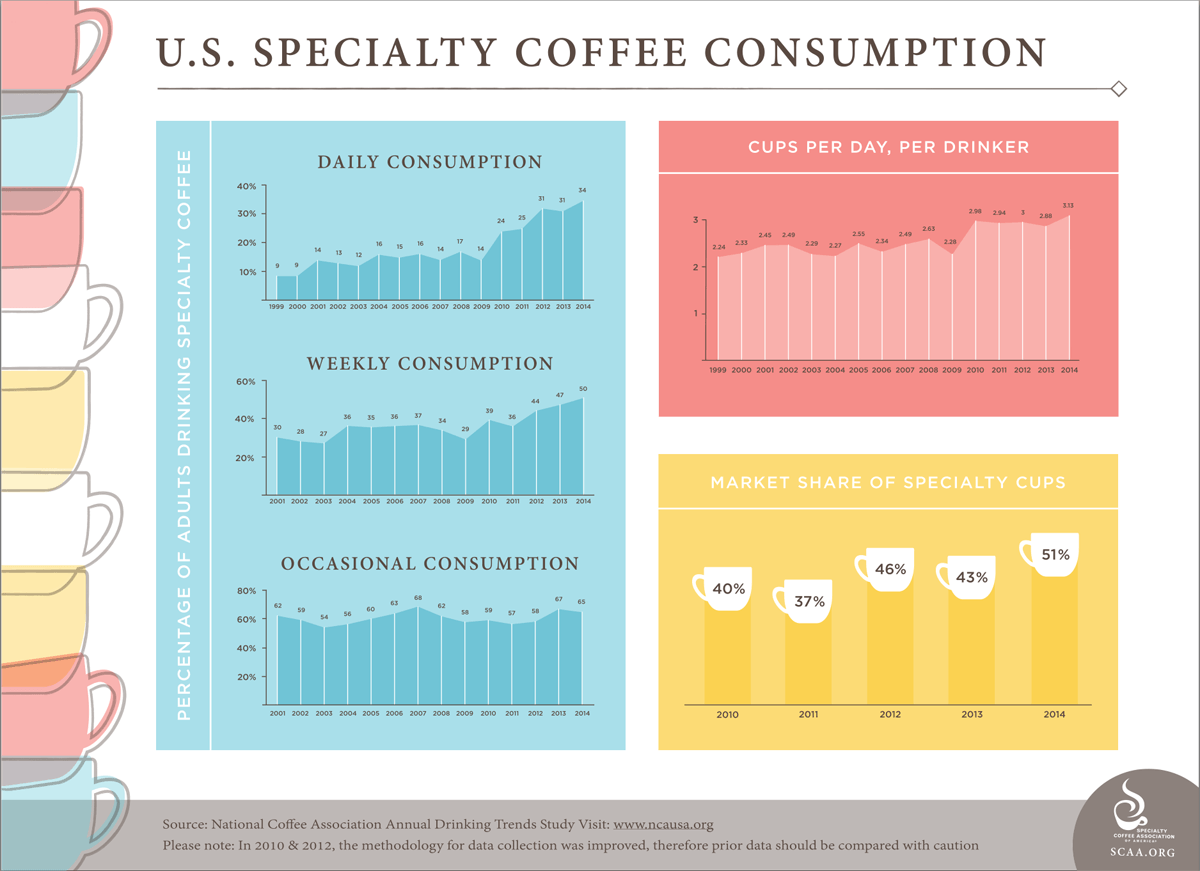Indonesian Coffee: Get To Know Your Coffee Origins

Modern-day Indonesia was one of the first countries in the world to start growing coffee commercially—before much of Africa, before most of Asia, and before the Americas. But Indonesian coffee has a 400-year history that is, unfortunately, one of brutal colonialism, disease, and struggle. And yet, despite a dark era of history, coffee is an integral part of Indonesian life—and the country is actually the 4th biggest coffee producer in the world. Let’s explore this fascinating, tragic nation and its delicious coffee.
A History Of Indonesian Coffee
Coffee plants came to Indonesia by way of Dutch traders and colonialists in the late 1600’s, who had secured coffee seeds from Yemen (arguably by smuggling them out) just earlier that century. The first island to grow coffee was Java, home to the city Jakarta (then called Batavia). The Dutch Colonial Government had launched plantations all around the city by 1699, and by 1711, the first major commercial exports were underway. Java quickly became one of the biggest coffee producers in the world—and Europe’s preferred source for beans. Naturally, Indonesia, being a nation of thousands of islands, saw coffee plantations spread to neighboring islands over the next century. Soon Sumatra had a booming industry, then Sulawesi (then called Celebes), Bali, and Timor (as well as dozens of much smaller islands). Unfortunately, poverty, starvation, and inhumane working conditions could easily be found wherever coffee farms could be. The Dutch plantation owners were rigid, grueling, and very demanding.
A Boom, The Rust, And Independence
As the coffee industry grew, so did infrastructure. Roads, railways, and shipping lines brought a connectedness to the Indonesian islands that had never been seen before. Java coffee was eventually blended with coffee from Yemen’s Port of Mokha, which led to the first commercial coffee blend: “Mocha Java”. Beans from Indonesia were highly sought after in Europe—so much that they were eventually as much as ten times as expensive as beans from Brazil. Between 1860 and 1880, an industry-decimating disease known as “coffee rust” hit its stride in Asia, destroying plantations across Sri Lanka, Indonesia, Malaysia, and several mainland nations. To save the industry, the Dutch brought in a different disease-resistant coffee species, robusta, which was planted generously across Asia. In 1942 the Dutch were forced out of Indonesia for good, collapsing not only to Nazi Germany’s push into Europe, but also Japan’s push into the Pacific. Japan’s colonial rule itself collapsed in 1945 when it surrendered to the United States, giving Indonesia’s growing nationalism a chance to birth a nation of its own.
Indonesian Coffee Growing Facts
When the Dutch and Japanese left, native governors divided the plantations among the laborers. To this day, over 90% of coffee produced across the Indonesian islands is grown by small family farms. Unfortunately, roughly 90% of the coffee grown is still of the robusta species—and you can’t blame them after what happened with the coffee rust. Thankfully, there’s been a resurgence in arabica production in recent years, which has given way for specialty-grade beans from Sumatra and Java to rise in popularity. Much of Indonesia’s coffee beans are processed via the ‘Giling Basah’ method, which arrived in the 70’s when Japanese investors saw its success in other nearby areas. Unlike with the washed or processing methods, the harvested coffee cherries are depulped by hand at the origin farm and dried on a patio for a few days. The semi-dried beans (around 30-50% moisture) are then taken to a collector who blends beans from various producers and puts them through a hulling machine while they’re still moist before setting them on patios to dry for several more days. This process is believed to enhance the Earthy and spicy flavors of coffee’s grown in this area of the world.
What Does Indonesian Coffee Taste Like?
Since Indonesia encompasses thousands of islands, not all coffee from the country tastes the same. In fact, some skilled professional coffee tasters can easily tell the difference between islands by flavor alone. Let’s take a deeper look at the three of the biggest producers that grow specialty-grade coffee beans. Sumatra is a household name in North America, beloved for its heavy body, low acidity, and flavors of Earth, spice, and forestry. Sulawesi (sometimes still known as Celebes) is far less known, but its specialty-grade beans are quite similar to those of Sumatra. They do tend, however, to have a lighter buttery mouthfeel, a more intense cedar aroma, and a slightly fruitier taste. Java coffee beans are less likely to be from arabica plants, but the few specialty-grade beans we do encounter from there have a rich spiciness and earthy sweetness.
Indonesian Coffee At A Glance
- Flavor: Earthy, spicy, forestry, low acidity, gentle sweetness
- Processing: Giling Basah, Washed, Natural
- Main Growing Regions: Sumatra, Java, Sulawesi
- Harvest: May to November




